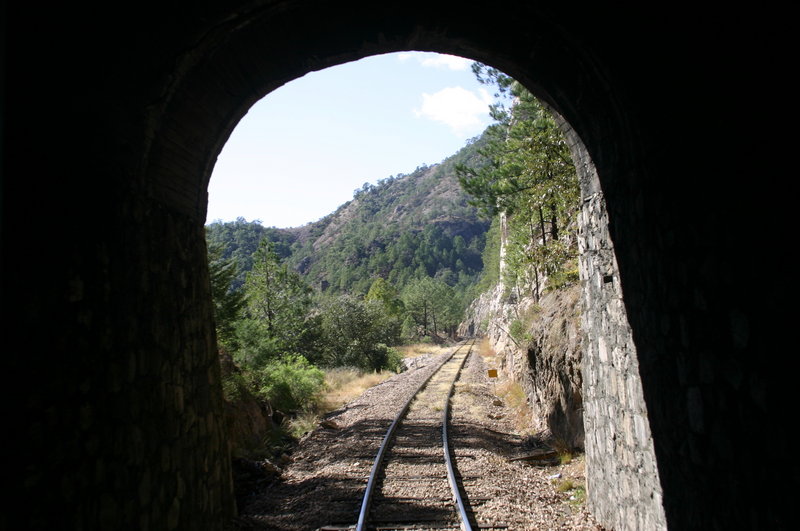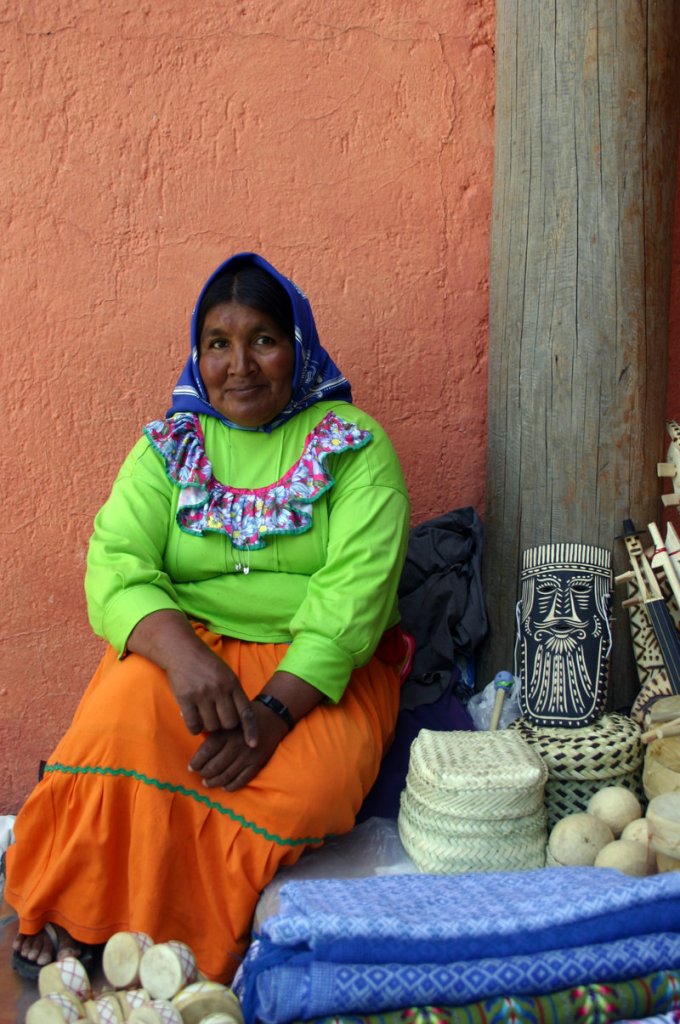CHIHUAHUA, Mexico – I won’t lie: I had some qualms about traveling alone to the Copper Canyon, a series of awe-inspiring gorges bigger than the Grand Canyon that happen to be in the same northwestern region of Mexico consumed by drug-trafficking violence.
At the same time, I knew from being in the news business that tourists are seldom, if ever, the target of such violence. I also was aware of the tendency to paint an entire region with a bleak brush when only small pockets are actually affected.
I’m glad I shrugged off the doubts. My trip to Las Barrancas del Cobre, as they are known in Spanish, was a great adventure. And I can confidently say that traveling here is safe — especially if you stick to the route of el Chepe, the government-run train that this year celebrates its 50th anniversary depositing tourists and commuters along a 400-mile (650-kilometer) stretch from Los Mochis in the Pacific coast state of Sinaloa to Chihuahua city, capital of Chihuahua state. The canyons themselves are all located within Chihuahua state’s borders.
There were moments off the train that gave me pause, such as when a native in the old silver mining town of Batopilas remarked, “Here, we see nothing, we hear nothing and we say nothing if we want to wake up alive each morning.” In that same town, where the drug-fighting military keep a high profile, I took pictures of attractive colonial-style building facades before realizing that at least two of them bore more than a dozen deep holes that could only have been rendered by the bullets of a high-powered weapon, the kind favored by Mexican drug traffickers.
And yet, during my brief stay, Batopilas was peaceful to the point of being comatose.
As I wandered through the narrow streets, men tipped their cowboy hats in deference, young couples and children posed amiably for photographs, and museum guides and hotel owners alike were eager to educate me on the town’s rich mining and Indian cultural history.
Frankly, the scariest part of my trip was getting there, in a small van that for much of the 4½-hour trip swerved, bounced and braked as it made a precipitous descent from nearly 7,900 feet (2,400 meters) to 1,840 feet (560 meters) on vunpaved, switchback roads with no guardrails.
Then there was a different type of scare, one that I chose: I ziplined at heights of up to nearly 1,500 feet (450 meters) over the Copper Canyon and tap-danced across two wobbly hanging bridges, albeit while wearing a helmet and being firmly attached to a steel cable that would prevent me from catapulting over the edge and into the depths below.
The scenery was thrilling too: The cliffs of the 5,900-foot-deep (1,800-meter-deep) Batopilas Canyon glowed red in the sun, sharp-edged mountain peaks repeated themselves in a visual bluish echo far into the distance, and a brown river that from above looked to be the width of a thread twisted its way across the canyon floor.
During my one-night stay at the Copper Canyon, a gorge named for the entire range, a full white, button-size moon rose above cliffs darkening into silhouettes of themselves as a dying sun infused horizontal cloud strips with pink and orange blush.
The Posada Barrancas Mirador hotel is literally built on the rim of the canyon. In the past, it was jammed with tourists, but I was one of only 17 guests on a night in early November. But the global economic crisis, the 2009 swine flu scare, and a steady increase in and attention to Mexico’s drug-related violence have devastated tourism throughout the entire Copper Canyon.
To those who stay away out of fear, I would simply say: Don’t.
In the lovely colonial city of El Fuerte in the Pacific state of Sinaloa, a guide led me down the El Rio River in a small wooden boat he rowed himself while rattling off the names of myriad winged species — egrets, blue herons, hawks, cardinals, ospreys and cranes among them — that literally flock to this internationally known bird sanctuary.
He tied the boat to a tree overhanging a riverbank and led me traipsing through bush and bramble until we reached hilltop boulders marked by petroglyphs, symbolic drawings of sun gods, plumed serpents, mystical coyotes and shamans believed to have to have been etched by the Nahautl Indians hundreds of years ago.
For my zipline tour, I and a half-dozen others took transportation arranged by the Mirador hotel to a state-run park, where we were met and escorted by guides.
In the town of Creel, The 3 Amigos tour company connected me with a guide descended from the Tarahumara Indians, who live in large numbers throughout the Copper Canyon. He took me to see giant stones sculpted by nature into whimsical shapes in the aptly named Valley of the Mushrooms and Frogs and Valley of the Monks.
If you’re feeling adventurous, The 3 Amigos and other outlets rent bikes, scooters and four-wheel drives and provide maps for self-guided trips. I met a U.S. and Australian man, each traveling separately, who’d run into each other the day before and decided to ride mountain bikes together down the dusty switchbacks into the Batopilas Canyon. They arrived hours later than expected due to multiple punctured tires, but agreed the trip was amazing.
As a woman traveling alone, however, I found the best way to explore the Copper Canyon was to jump on and off el Chepe and stay in hotels built specifically along the route for train travelers.
Nearly every day of the journey, I met people from all over the world who agreed with me: This trip is worth taking.
Send questions/comments to the editors.




Comments are no longer available on this story